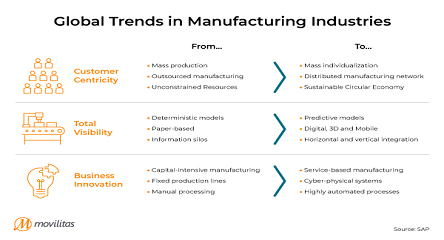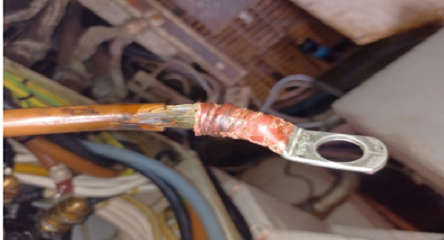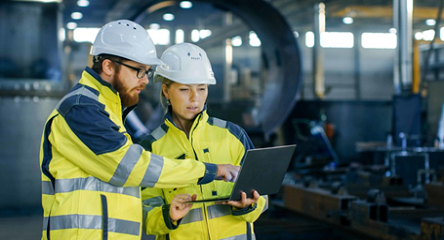As the nature of work for manufacturing and services companies changes possibly forever, using emerging technologies such as Artificial Intelligence (AI), augmented reality (AR), and connected worker software to transform the enterprise has become more relevant than ever.
For industrial companies, improving the safety and productivity of frontline workers in the COVID-19 era and beyond will be critical to business success and continuity. Tools like remote assistance, augmented work instructions, and knowledge sharing will be crucial to helping these companies transform their operation and continue to support their customers.
COVID-19 is forcing manufacturers to change how they operate
The industrial frontline workforce – skilled technicians, associates and engineers that are performing hands-on jobs in manufacturing, installation, and service – are facing unprecedented times. Already challenged by an aging and retiring workforce and increasing skills gap, a new set of challenges has emerged during this recent pandemic.
While manufacturers aren’t stopping operations because of COVID-19, they are running into major issues as a result of it, including:
- The need for social distancing
- Travel limitations and restrictions
- Disruptions in workforce due to quarantining and shelter in place
You could look at these challenges as temporary, but one of the things that manufacturing and service companies have always relied on is face-to-face visits, in-person training, and “over the shoulder” problem solving to get the job done. However, we may never go back to the day where we can rely on face-to-face interactions to keep operations running.
While temporary measures like social distancing will eventually be lifted, some changes, like remote assistance and instant-skilling, will remain because they enable employees to perform their jobs independently, without requiring in-person assistance. This also cuts down on travel and allows workers to access information they need when and how they need it. Moving forward, industrial companies must focus on:
- Enabling workers to perform jobs independently
- Using remote assistance the standard, not face-to-face
- Being able to instant skill any worker in the workforce to perform any job at any time
The Promise of Industrial AR/MR
Fortunately, manufacturers are turning to emerging digital technologies such as mobile and wearable devices and augmented and mixed reality (AR/MR) that are helping to connect a new generation of workers and allow organizations to proactively deliver the right level of support and guidance. There are several areas where these technologies are changing the manufacturing industry:
- Training: instead of the classic classroom training, using AR to provide guided assistance to technicians as they work through a manufacturing process
- Remote Expert Support: helps teach technicians new concepts, hands-on learning and training
- Complex Assembly: using electronic work instructions and digital overlays to help guide workers through complex assembly procedures – ensuring quality and standardization
- QA: use digital, AR-generated overlays to verify technicians work and help determine pass/fail on manufactured parts
- Safety: providing not just safety training but guidance to newer workers as they are performing new tasks, operating new machines, etc.
- Equipment Maintenance: used to help streamline factory equipment maintenance, repair, and service
But rates of adoptions for these types of technologies are low due to high cost, cumbersome tools, and lack of continuous improvement opportunities. This has resulted in many early adopters stuck in pilot purgatory, unable to scale beyond an initial proof-of-concept, especially during the recent pandemic.
Enter AI
By using artificial intelligence, manufacturers can improve the safety, quality, and productivity of their workforce both during the COVID-19 crisis and beyond. At Augmentir, our vision is to use AI to empower each worker to continually do their best work and provide each worker exactly what they need, when they need it, and how they need it to close skills gaps at the moment of need.
Our vision at Augmentir is to transform connected worker technology with AI …
So, what exactly can you do with an AI-powered connected worker platform?
- Enable independent work – empower your workforce to perform jobs more independently through step-by-step, augmented work instructions
- “Instant skill” your workforce – use AI-based personalized work instructions that are tailored to each workers proficiency level to help them complete jobs at peak quality and performance
- On-demand virtual support – Remote expert assistance and collaboration tools that enable remote support and guidance, amplified with AI-bots that accumulate and make available tribal knowledge for real-time virtual assistance.
- Delivers hands-free operations – Augmentir on industrial smart glasses
- Use AI to uncover True Opportunity™ – AI Separates “True” from “Raw” Opportunity to help identify areas where the largest improvements can be made
AI is uniquely suited to identifying capturable opportunities from the massive, noisy data set generated by frontline workers, and because of that, it can serve as the foundation for a company’s continuous improvement initiatives.
Another area where AI adds value is in using AI for continuous improvement around training and skilling-up of the workforce.
For instance, AI can identify specific individuals that would benefit from targeted training on a specific tool or procedure as well as improvements to content and instructions directed at the author.
And if you think about it – the possibilities are endless. There are a variety of areas that can be targeted for continuous improvement including the ecosystem of content authors, frontline workers, subject matter experts, operations managers, quality specialists, etc. Along with that, you’ll find dozens of opportunities to continually address the skills gap, improve quality, and improve overall performance.





